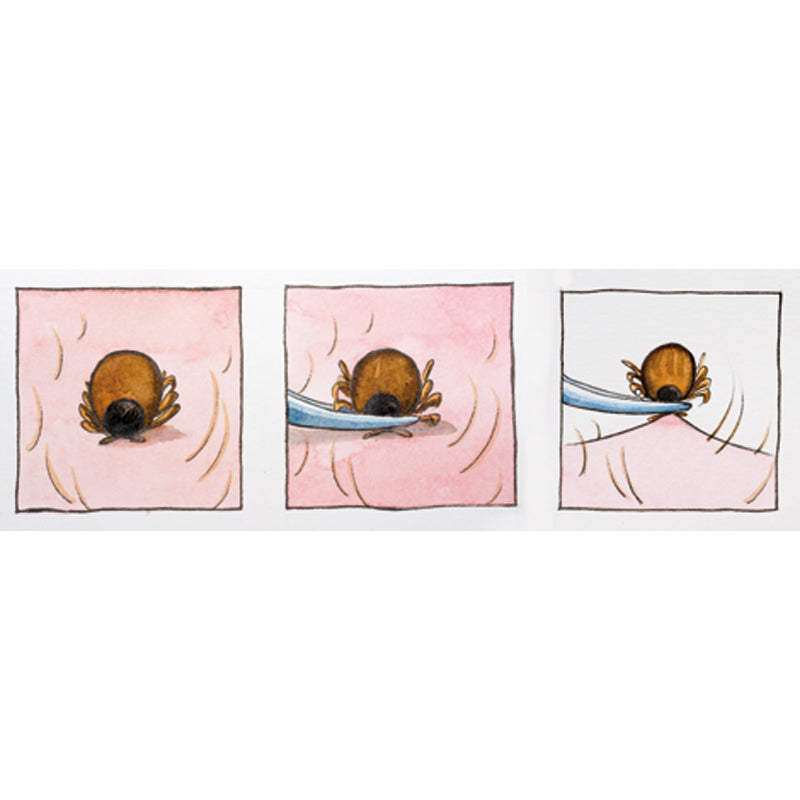
Tick season is prevention time: Practical advice for removal
Share

Spring brings not only warmer temperatures and blooming flowers, but unfortunately also unwelcome guests like ticks. These small arachnids can transmit dangerous diseases. Therefore, it's important to know how to effectively protect yourself and react appropriately in the event of a tick bite.
There are about twenty tick species in Western Europe, some of which are very rare or are only temporarily introduced. The hard tick (Ixodes ricinus) is the most common tick species that infects humans.
Ticks have various strategies for finding their hosts. Some species, such as the common tick, wait on plants and hold on with their hind legs while extending their forelegs to grasp potential hosts. Other species are active hunters and actively move forward in search of hosts. They use chemical senses such as carbon dioxide sensors to locate their hosts.
Ticks can transmit diseases such as Lyme disease, TBE, babesiosis, and others. In Central Europe, species of the genus Ixodes are the most common vectors. Preventive measures are therefore crucial to avoid tick bites. These include regular body checks for ticks, wearing appropriate clothing, and using insect repellents.
In the event of a tick bite, it is important to remove the tick as quickly as possible. Various tools such as tweezers, tick pliers, and tick cards can be used to safely remove the tick.
There is some debate about whether twisting the tick aids the removal process. Some experts recommend grasping the tick close to the skin and gently pulling it straight out, while others advise removing the tick with a twisting motion. In any case, it is important to try to remove the tick in such a way that no body parts are left in the wound. Sometimes parts of the mouthparts can remain in the wound. In this case, it is important to avoid further irritation and keep the wound clean. In many cases, the tick remains are shed by the body, but if not, they can be removed by a doctor.
When removing the tick, be careful to squeeze it as little as possible to avoid putting additional stress on it. Tweezers are a common tool for tick removal. Grasp the tick as close to the skin as possible and pull it straight out without squeezing it. You can also gently twist or shake the tick to make removal easier.

To remove it, proceed as follows:
- Grasp the tick with tweezers as close to the skin as possible
- Pull the tick out with a steady pull straight (or in a twisting motion) to lever
- Disinfect the puncture site thoroughly
- Dispose of the tick without crushing it
- Clean and disinfect the tweezers
- Monitor the injection site for redness, swelling, or other abnormalities over the next few weeks and consult a doctor if you experience any symptoms.
Removal should be documented and, if necessary, reviewed by a physician. PCR tests can be performed to test the tick for pathogens, although a negative test does not rule out infection.
Effective prevention and prompt removal are crucial to minimizing the risk of tick bites and associated diseases. Stay informed and take the necessary precautions to protect yourself and your family.
With the right protective measures and the right procedure for removing bitten ticks, the risks from tick bites can be significantly reduced. Our high-quality tick tweezers facilitate quick and safe removal. Enjoy nature without worry – but remember tick protection!
